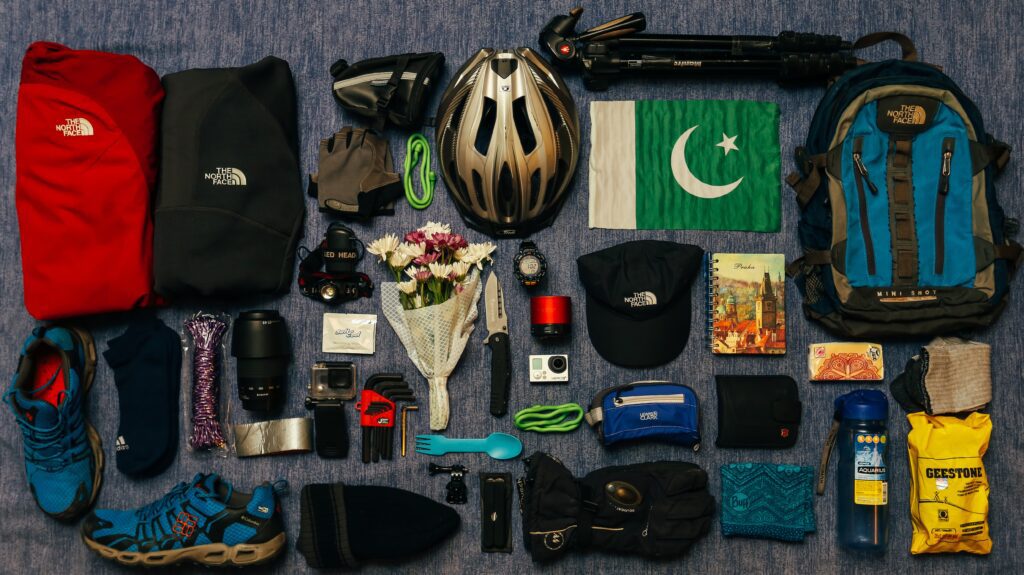Riding Toward a Greener Future
As cycling continues to grow as a sustainable mode of transportation, recreation, and fitness, the demand for eco-friendly gear has skyrocketed. In 2025, cycling apparel for sustainable fashion is at the forefront, combining performance with ethical and environmentally responsible practices. Cyclists today are not just looking for comfort and aerodynamics—they want gear that reduces waste, minimizes carbon emissions, and supports fair labor.
This article dives into the trends, materials, and top brands shaping cycling apparel for sustainable fashion in 2025—and how you can ride in style while protecting the planet.

The Rise of Sustainable Cycling Apparel
Cycling is inherently eco-friendly, but the gear hasn’t always kept up. Traditional cycling kits often rely on petroleum-based materials and energy-intensive manufacturing. However, cycling apparel for sustainable fashion is now transforming the industry.
According to the Apparel Impact Institute, the fashion industry remains one of the world’s largest polluters, responsible for approximately 10% of annual global emissions. The shift toward sustainable cycling gear helps mitigate that impact.
Why Sustainability in Cycling Apparel Matters
Cyclists are outdoor enthusiasts who understand the value of nature. Wearing apparel that aligns with those values reinforces their environmental commitment. By choosing sustainable cycling gear:
-
You reduce your personal carbon footprint.
-
You help decrease textile waste.
-
You support ethical labor practices.
Brands like Patagonia are proving that high-performance cycling wear and environmental stewardship can coexist. Their use of Fair Trade Certified™ and recycled materials exemplifies a responsible approach.
The Problems with Fast Fashion in Cycling
The fast fashion model—cheap, disposable, and trend-driven—has infiltrated cycling gear. It leads to:
-
Short lifespans for apparel
-
Textile waste (over 92 million tons annually)
-
Lower quality materials and poor working conditions
Cycling apparel for sustainable fashion addresses this through timeless design, long-lasting construction, and take-back programs to recycle or repair old gear.
Key Trends in Sustainable Cycling Apparel for 2025
The global cycling apparel market is projected to grow by over $2 billion from 2025 to 2029, largely due to demand for sustainable and multifunctional clothing. Here are the top trends defining cycling apparel for sustainable fashion in 2025.
1. Recycled and Biodegradable Fabrics
Top sustainable materials in cycling wear include:
-
Recycled polyester from plastic bottles (used by Rapha, MAAP)
-
Merino wool, a natural, biodegradable fiber used by Isadore
-
Organic cotton and hemp for casual cycling and commuting
-
Biodegradable nylon, which decomposes quickly in landfills
These fabrics aren’t just eco-friendly—they’re breathable, moisture-wicking, and long-lasting.
2. Ethical Manufacturing & Transparent Supply Chains
Transparency is key to trust. Top brands ensure their supply chains are:
-
Fair-wage certified
-
Environmentally monitored
-
Locally produced (to reduce emissions)
Rapha and Presca disclose their suppliers, and Isadore manufactures its gear in Europe using Oeko-Tex and Bluesign® certified facilities.
3. Circular Economy Practices
Cycling apparel for sustainable fashion embraces repairability and reuse:
-
Matchy offers free crash damage repairs.
-
Universal Colours uses compostable packaging and recycled plastics.
-
Presca offers trade-in programs and net-zero supply chains.
This extends product life and keeps garments out of landfills.
4. Stylish and Functional Design
Sustainable gear no longer means boring. Trends include:
-
Bold gradients and eco-dyes (e.g., Cassiopeia’s 2025 line)
-
Aero-fit for performance, using sustainable stretch fabrics
-
Urban-friendly crossover gear that looks great off the bike too
Leading Brands in Sustainable Cycling Apparel
Below are standout brands shaping the future of cycling apparel for sustainable fashion in 2025:
🥇 Rapha
-
Materials: Recycled fibers, Bluesign® certified
-
Ethics: Member of Sustainable Apparel Coalition
-
Flagship Products:
-
Pro Team Bib Shorts – compression fit and durable
-
Core Jersey – light, breathable, and fully recycled
-
🥈 Patagonia
A pioneer in outdoor sustainability, Patagonia uses Fair Trade Certified™ practices and recycled nylon in its mountain biking line.
-
Dirt Roamer Jacket: Lightweight, packable, and wind-resistant
-
Nine Trails Shorts: Made for rugged trails with ethical fabrics
🥉 Isadore
Founded by pro cyclists, Isadore blends performance with sustainability.
-
Merino Base Layers – thermoregulating and odor resistant
-
Alternative Line – 100% recycled materials, European-made
🏅 MAAP
Known for sleek design and sustainability:
-
Alt_Road Jersey – aerodynamic and made from recycled fibers
-
Pro Bib Shorts – includes biodegradable components and water-saving dyes
🏅 Universal Colours
An eco-pioneer, using compostable mailers and recycled materials for all gear.
-
Monochrome Jersey – sleek, soft, and carbon-neutral
-
Chroma Bib Shorts – long-distance comfort with green innovation
How to Choose the Right Sustainable Cycling Apparel
To pick the best cycling apparel for sustainable fashion:
✅ Look for Trusted Certifications
-
Bluesign® – chemical safety and sustainability
-
GOTS – organic cotton assurance
-
Fair Trade Certified™
-
Oeko-Tex® – textile safety
-
B Corp – holistic social and environmental ethics
✅ Choose Gear Built to Last
Long-lasting gear cuts down on waste. Look for reinforced stitching, UV resistance, and durability warranties.
✅ Research Brand Ethics
Check sustainability reports. Brands that are honest about their sourcing and factories are worth supporting.
✅ Go for Multi-Use Pieces
Choose gear that works for riding and lifestyle, such as ECOALF’s cotton jackets that function as both windbreakers and commuter wear.
Why Invest in Sustainable Cycling Apparel?
Switching to cycling apparel for sustainable fashion is not only good for the planet—it benefits you:
-
🌍 Lower Carbon Emissions
-
🧵 Longer Lifespan
-
🤝 Fair Labor Support
-
🚴 Better Performance
-
🎯 Stronger Brand Values
Eco materials like merino and recycled poly outperform traditional synthetics in moisture control, odor resistance, and UV protection.
Common Challenges and How to Overcome Them
Despite growing demand, challenges remain:
❌ Higher Upfront Cost
Yes, eco-apparel can be 10–30% more expensive. But its longer lifespan and repairability often make it cheaper in the long run.
❌ Limited Local Retail Access
Not all local bike shops carry sustainable options. Explore dedicated platforms or shop directly from ethical brand websites.
❌ Greenwashing
Avoid brands that claim sustainability without certifications. Look for transparency and published sourcing standards.
Tips to Build a Sustainable Cycling Wardrobe
-
🛍 Buy fewer, better items – Prioritize quality over quantity.
-
🧵 Repair gear – Use brand repair services or local tailors.
-
🧺 Wash cold & air dry – Save energy and extend fabric life.
-
♻️ Recycle old gear – Donate or use take-back schemes.
-
📦 Buy second-hand – Platforms like eBay and GearTrade offer pre-loved gear.
Future of Sustainable Cycling Apparel
The cycling industry is gearing up for a greener era:
-
Biodegradable elastics and trims
-
Waterless dyeing technology
-
AI-optimized production lines
-
Blockchain-based supply chain tracking
As innovation continues, cycling apparel for sustainable fashion will become the norm, not the exception.
Conclusion: Pedal in Style, Ride for the Planet
The rise of cycling apparel for sustainable fashion in 2025 proves that riders care about more than speed—they care about sustainability, ethics, and responsible living. With leading brands like Rapha, Patagonia, and Isadore offering gear that looks good and does good, cyclists can reduce their impact without sacrificing performance.
Whether you’re a roadie, commuter, or weekend trail explorer, your wardrobe choices can drive positive change.
Ride smarter. Ride cleaner. Ride sustainably.



